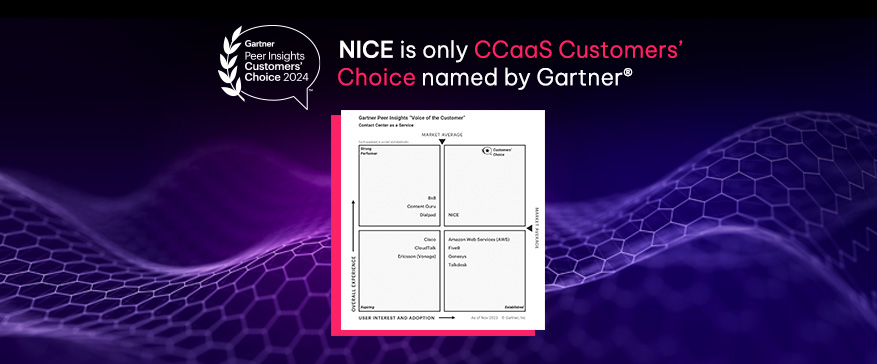You probably already know that forecasting is one of the contact center’s most critical functions. It enables short- and long-term planning, allows organizations to prepare for future demand and connects customers with the right agents at the right time. And in an age when contact centers are constantly adapting to new channels, new agent skillsets and rising customer expectations, getting forecasting right is more challenging than ever before.
Workforce management leaders must calculate exactly which agents and which skillsets are needed in an environment that’s constantly changing. If that sounds complicated, that’s because it is. Forecasting blends art and science to predict probable staffing scenarios and help businesses achieve goals. However, many contact centers are using simple models to forecast demand. That makes it difficult for contact centers to adapt to the dynamic environment in which they operate.
To overcome these challenges, many contact centers are turning to artificial intelligence (AI)-based forecasting to intelligently pinpoint the model that provides the most accurate forecast for a particular scenario and consistently align forecasting with enterprise objectives.
Examining traditional forecasting models
Take, for example, the weighted moving-average model that’s most commonly utilized for forecasting today. This model leverages historical data to make predictions about future staffing needs, but due to simplicity, it can cause projections to lag behind changes in customer demand, from seasonal variables, and complex relationships in data that aren’t always accounted for.
Contact centers that use this approach typically experience discrepancies of up to 8 to 10%. That leaves workforce management leaders in a place where they’re constantly adjusting schedules to chase the right staffing balance. Costs from additional labor expenses related to paying overtime or overstaffed intervals can quickly add up, and service levels suffer when staffing is less than optimal.
And that doesn’t just impact your bottom line. It can also negatively affect employee engagement. If an agent’s work schedule changes constantly, he or she can find it hard to plan for events like doctor’s appointments or a child’s activities – or anything, really, that enables a healthy work-life balance. Similarly, agents’ engagement levels can suffer if they’re regularly working shifts that are understaffed or not staffed with agents who have the right skillsets; these shifts can leave them feeling overwhelmed and frustrated.
For most contact centers, however, moving beyond simple forecasting models can be a challenge. Sourcing and retaining employees with the right expertise to use more advanced models is tough – after all, you’ve probably hired managers and supervisors for their team management skills, not their knowledge of statistical models. And often the proper tools aren’t in place to empower greater forecasting accuracy. It can take substantial time just to ascertain which model is best suited for a situation and account for the peculiarities of each model.
Enter AI-based Forecasting.
A
workforce management solution that used AI-based forecasting improved planning accuracy by automatically testing different models and identifying the one that provides the most accurate forecast under specific conditions. It can help you establish a base plan, which you can then adjust for new product or service introductions, or planned campaigns that could have a high impact on the contact center operation. And it increases employee engagement by reducing net staffing variances through more accurate scheduling. Employees feel that there’s a balance between business and personal needs and that that they’re more likely to get the schedule they want.
It’s also common for forecasts to require the use of multiple models to establish staffing needs for different days or weeks of the month. Determining which model works best and compiling a coherent forecast for weeks, months or years into the future can be incredibly complex, but AI makes it simple by streamlining and automating the entire resource planning process.
An AI-based forecasting solution can automatically evaluate dozens of different algorithms and leverage historical data patterns, seasonality, cyclicality, multi-skill capabilities and omnichannel routing to make forecasting more efficient and effective. it can also draw on machine learning to constantly optimize forecasting capabilities and take into account new data as it’s generated.
By using AI for forecasting, contact center leaders don’t have to be experts in forecasting models. They don’t need to understand the peculiarities that must be accounted for when using them or dedicate time to uncovering which model is the most accurate. By leveraging AI-based forecasting, contact centers can swiftly realize short- and long-term planning, free supervisors to focus on managing and coaching instead of coordinating schedule changes, and provide agents with schedules that they can trust, while still giving them the autonomy they desire to make changes that aren’t too disruptive to the operation. To learn more about AI-based forecasting, read our new ebook, “
Workforce Management AI-based Forecasting for Dummies.”









